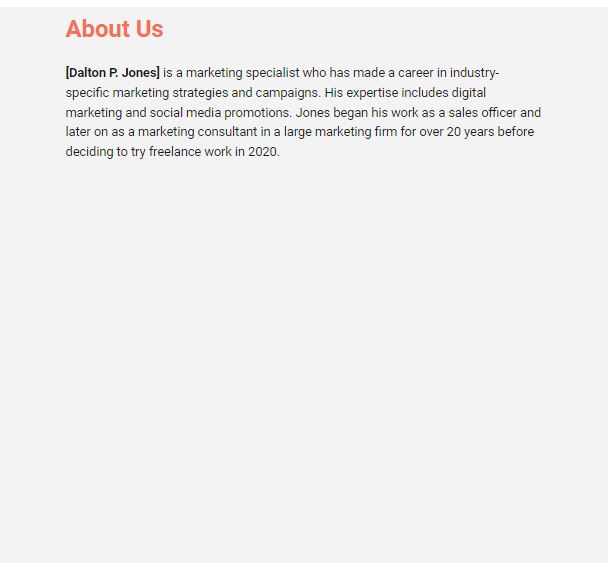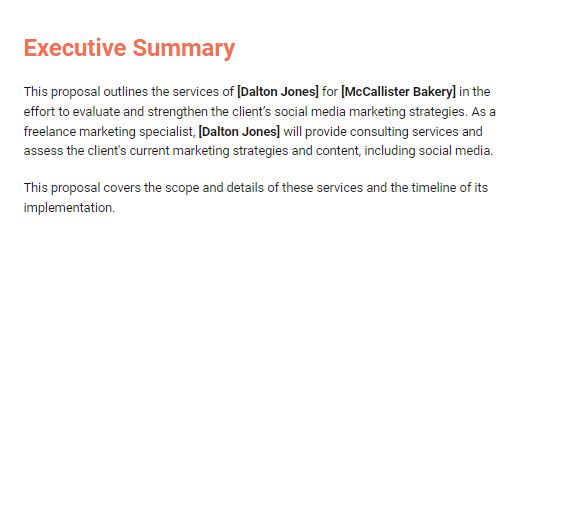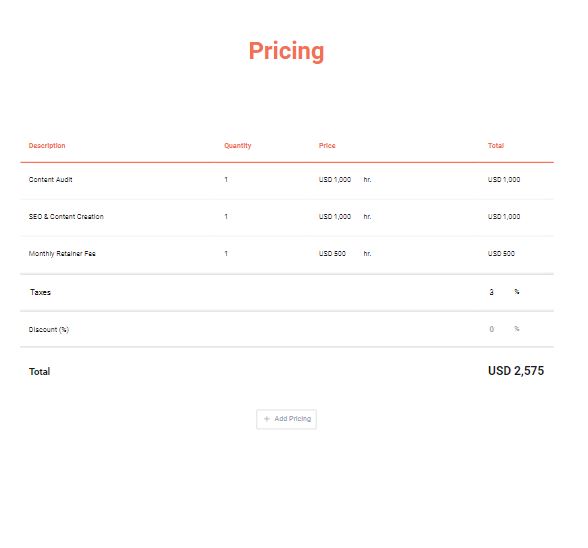Writing business proposals can be easy if you understand how to go about it. So, get in here to discover effective tips for writing an excellent business proposal.
Business is about solving people’s problems by giving them a solution at a speculated agreed price. A business can also solve the problem of another Business, popularly known as the Business-to-Business (B2B) relationship.
But how do these businesses or customers get to know each other based on the products or services they render? A perfect way they can is by writing business proposals.
A business proposal is a written document sent to a potential customer or business to persuade them for a Job or project your product or service will be the best solution.
Writing business proposals to prospects or clients helps to reach out to them whether it was requested, i.e., solicited for or not, i.e., unsolicited. It also helps inform the clients about how you can provide value for them and how your product or services can be the best decision they can take to solve their problems. Unfortunately, many are usually sent to such clients, just like bidding for a project, so informally writing business proposals is a no-go area.
When writing a business proposal, it must include many things to persuade your clients. This is because when your clients read your business proposal, it should always communicate Clarity, value, focus, competence, and trust.
Table of Contents
Types of Business Proposals
There are two major business proposals: solicited and unsolicited. The solicited business proposal are the ones that are requested from the buyers to see whether your product or service will be able to solve their problem or not.
Before clients or buyers send a Request for proposal (RCP), the company would have briefed you about their problem and what they want; this will help you write a business proposal based on that.
The other is an unsolicited proposal; you will have to write a business proposal that persuades businesses and clients that you know your product or services can solve their problems.
Although the approach to writing both business proposals is slightly different, the business proposal structure is the same.
10 Content of a Business Proposal

-
Title Page
This is the first thing your client, a business, or an individual will see, which will determine whether it’s a Yes or a Big No, so you don’t want to do the wrong thing in this section when writing a business proposal.
The following should be well stated on this page;
- Your Company name
- Your Client’s Company name
- Date of proposal submission (optional).
And Your title page should have some basic information like your; company’s contact information, your company’s logo, your client’s name, and their position in the business with a title related to the problem you intend to solve with your product or service.
-
Table of Content
This is a Fundamental Part of the business proposal; it shows the outline of the content in your proposal. If you send an e-copy of the proposal, you can hyperlink each outline to make it clickable; this makes navigation through the proposal easier.
Sometimes, due to extensive submissions of proposals to a particular client, they skim through them to save time. A table of contents will be handy in this situation as it will direct them where they want to read your business proposal.
-
Executive Summary
This section allows you to explain the proposal in a single section. It is more of pitching everything that makes your product or service the best solution to your client’s problem and includes the significant parts of your business proposal.
This section should be paid attention to because it is also a good criterion; the client will use it to judge whether they want to continue reading your proposal or not.
It should answer the following questions;
- What is your company about?
- What are your company goals?
- What achievements has your company made in the past years related to the problem?
- How can you provide a solution to their problems with your products or services?
This section is also where you will give a summary of each part of the proposal. It should be written to make the reader desire to check the whole business proposal.
-
Problem Identification
Writing business proposals without identifying your client’s problem is a big red flag, the biggest one at it. Problem identification is where you ensure that you explain the problem your clients are facing without leaving any detail.
Through this section, you can pinpoint their pain points and even explain problems they don’t know they are facing. This always gives the client the belief that you are well prepared and know what you are dealing with. And also, you have to be specific and detailed when stating these problems.
Because the more the problems you are stating are more precise to their problem, the more they will trust what you have to offer. This is because they know you are well aware of the problem, so whatever solution you bring should be perfect.
-
Proposing a solution
This is everything for your business proposal! Here, we explain how the benefits of your product or service will give lasting solutions to their problems.
Please do not talk about the features of your product or service when writing a business proposal; replace that with the benefits and what it brings to the table.
Brag about how your product can deliver and make the company not look for any other solutions. You will also state how the solution will be executed, along with its duration, timeline, and goals.
Insight.ng provides you with a daily dose of informative content like this. Click here to subscribe to our Newsletter and avoid missing out on such content.
-
Qualifications
After you have explained how your product or service will help your clients solve their problems, the next thing to do when writing business proposals is to build credibility.
You can show them that your product or service is qualified to do what you said. This is where you will build the trust between you and your client.
This can be done by showcasing your company’s achievements, past client testimonials, different case studies related to the problem on the ground, and awards/milestones your company has acquired.
You must make sure you use this section to convince them that they can trust you with the proofs you will provide. And in all, ensure that all proofs are related to the problem you intend to solve because that is the only one that will be relevant when the clients decide whether to trust you.
Apart from the pricing factor, this section is also a big player in getting the Job or Not.
-
Work Timeline
This section is where you set up the time and duration of how your solution will be executed if your product or service is signed.
In writing a business proposal, you have to include the breakdowns and milestones of the whole process of applying your service or product as the solution.
This is where you will explain to your clients how to use your product or service to solve their problems. With the duration and achievements you ought to have attained at each stage or category of the process.
The best way to show this when writing business proposals is through diagrammatic expressions, be it a workflow, Roadmap, flow chart, or timeline infographics with deadlines for each stage and category.
The timelines are not usually specific but in the form of duration or estimation of how the whole process will be.
-
Pricing
This already explains itself; this section is where you outline the price for your product or service, the payment method, how your payment will be scheduled during the Job process, the terms and conditions that are attached to the payment, and also the legal part of the transaction.
The major reason why this section is Important when writing business proposals is that your price, compared to the other proposals’ prices, plays a big part in your winning the job. Therefore, the price must be fair and justified.
You must ensure you do not undervalue your product or service and not overprice it too, to not chase away potential customers with high prices.
The main essence is to give the clients multiple options regarding your price. It is also best to break the payment down into milestones so that the client will know what they are paying for as the Job proceeds.
-
Terms and Conditions
In every agreement or contract, there are always terms and conditions that will guide such an agreement.
So, therefore, when writing business proposals that involve an agreement between two businesses or bodies, this section will be included.
The terms and conditions will help guide the contract and fit your company’s legal rights. You can also summarize what you promised to do with your product or service to solve their problem.
This section is Important as it showcases all the legal implications of the whole contract or job. So, it needs to be clear enough to be well understood by both parties.
-
Conclusion
The conclusion is more where your client will append their signatures to show that they are ready to embark on the job with your company. It is also called the acceptance section.
This is where spaces are designated for your clients’ signage, your signage, and the proof that the job has been approved.
Ensure to also put in your contact information. This will help to make reaching out to you immediately feasible.
The listed above are sections that must be well stated and included when writing business proposals for your business. The above explanation will give you an understanding of what you are to input in each section.
Now let us show an example of a written business proposal and see how each section listed above plays its role.
The Example of a Business proposal we will be using is a proposal sent to a company needing a freelance social media manager.

A front cover design sample for a business proposal.

The ‘About Us’ page. This is where you describe your business.

The executive summary is the section you summarize the proposal.

Under this section, you identify the scope of the proposal.

State the price/cost of the project here.
Before we conclude on writing a business proposal, let us walk you through the Dos and Don’ts of this field; writing business proposals.
Dos of Writing Business Proposals
- Writing business proposals should be to suit the purpose of the Job requirements and needs
- Always edit your proposal to satisfy the client’s need for each proposal sent.
- Do a thorough spell-check when you are done writing a business proposal
- Do more visuals and less text in your business proposal
- Have your proposal in a defined and uniform format.
- Be realistic about the achievements you promised in your business proposal and also sound sensible.
- Elaborate on why your business is special, but not too much you; let it be tailored to their interest.
- Tackle their fears and objections head-on by clearing their doubts and answering their questions.
- Be honest and genuine with all information you will provide.
Don’ts of Writing Business Proposals
- Include technical Jargon and terms.
- Robust claims and deceitful achievements.
- Challenges and setbacks of previous related jobs.
- Complicate things and introduce sophisticated strategies.
Would you like to learn how to write an effective business proposal with proper guidance and mentorship? If yes, click here to join a community of content writers.
End Notes
Writing business proposals should be a breeze for you now; with the above information, your next proposal should win the next job you are writing to. So, to summarize, this is my conclusion on writing a business proposal.
It’s a document that presents your business to potential customers and clients as a solution to their problems. They are willing to solve their problems but are unsure who entrusts the process to them.
So, you must simultaneously make your proposal as genuine as possible, attractive, and trustworthy. When written right, a business proposal will help you reach out to clients who will later become your long-term clients.
You might also like:
Top 8 Reasons Why Start-Ups Fail in Nigeria
How Tony Elumelu is Changing Lives through TEF Grants
About Author
- Emmanuel Odebiyi is a seasoned content writer who specializes in writing valuable and engaging content in the technology, career, freelancing, finance, and lifestyle niches. He also writes sales copies that turn visitors into returning customers.
Latest entries
 OpinionSeptember 7, 2023Nigerian Proverbs and Wisdom: Lessons for Modern Living
OpinionSeptember 7, 2023Nigerian Proverbs and Wisdom: Lessons for Modern Living EntrepreneurJune 5, 2023How to Edit a Video with video editing software in 2023
EntrepreneurJune 5, 2023How to Edit a Video with video editing software in 2023  TechnologyFebruary 4, 2023How to Track a Stolen Phone in Nigeria (For Android Users)
TechnologyFebruary 4, 2023How to Track a Stolen Phone in Nigeria (For Android Users) TechnologyJanuary 23, 2023A Simple Guide on How to Format Laptop Windows 10
TechnologyJanuary 23, 2023A Simple Guide on How to Format Laptop Windows 10

